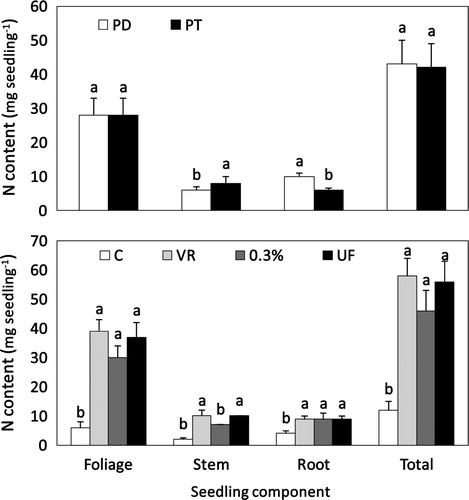Figures & data
Figure 1. Root collar diameter and height of red pine and black pine seedlings at various types of fertilization. The same letter on each bar (mean ± S.E.) within each treatment indicates no significant difference according to Tukey's test at P = 0.05. PD: Pinus densiflora, PT: Pinus thunbergii, UF: slow release solid fertilization, 0.3%: 0.3% foliar fertilization, VR: varying rates of foliar fertilization, C: control.
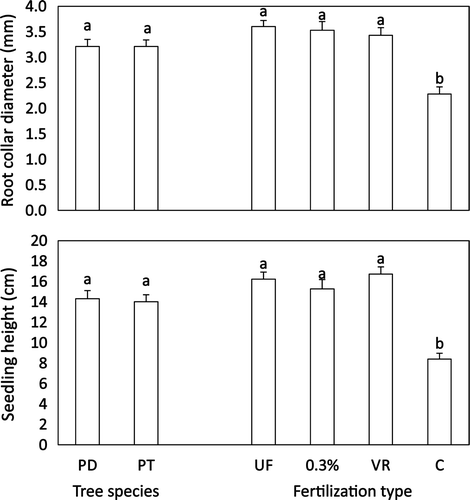
Figure 2. Dry mass of red pine and black pine seedlings at various types of fertilization. The same letter on each bar (mean ± S.E.) within each treatment indicates no significant difference according to Tukey's test at P = 0.05. PD: Pinus densiflora, PT: Pinus thunbergii, UF: slow release solid fertilization, 0.3%: 0.3% foliar fertilization, VR: varying rates of foliar fertilization, C: control.
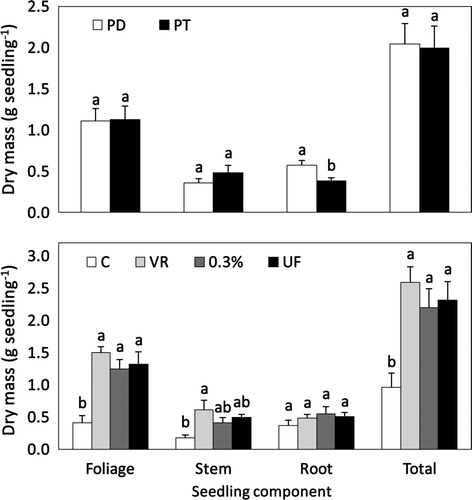
Figure 3. Shoot/root ratio of red pine and black pine seedlings at various types of fertilization. The same letter on each bar (mean ± S.E.) within each treatment indicates no significant difference according to Tukey's test at P = 0.05. PD: Pinus densiflora, PT: Pinus thunbergii, UF: slow release solid fertilization, 0.3%: 0.3% foliar fertilization, VR: varying rates of foliar fertilization, C: control.
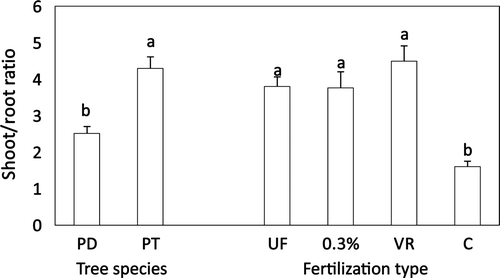
Table 1. P-value of ANOVA of root collar diameter, height, dry mass, and shoot/root ratio of red pine and black pine seedlings in various types of fertilization.
Figure 4. Carbon concentration of red pine and black pine seedlings at various types of fertilization. The same letter on each bar (mean ± S.E.) within each treatment indicates no significant difference according to Tukey's test at P = 0.05. PD: Pinus densiflora, PT: Pinus thunbergii, UF: slow release solid fertilization, 0.3%: 0.3% foliar fertilization, VR: varying rates of foliar fertilization, C: control.
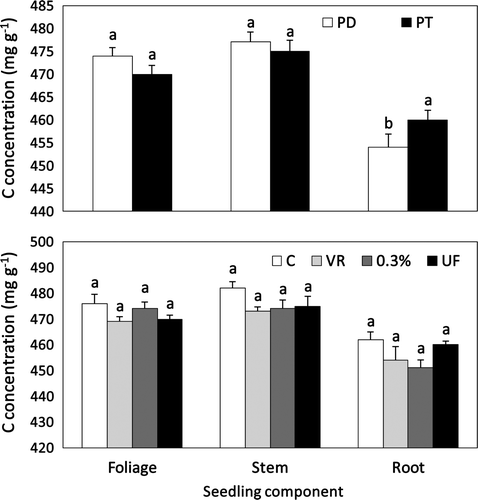
Figure 5. Nitrogen concentration of red pine and black pine seedlings at various types of fertilization. The same letter on each bar (mean ± S.E.) within each treatment indicates no significant difference according to Tukey's test at P = 0.05. PD: Pinus densiflora, PT: Pinus thunbergii, UF: slow release solid fertilization, 0.3%: 0.3% foliar fertilization, VR: varying rates of foliar fertilization, C: control.

Figure 6. Nitrogen content of red pine and black pine seedlings at various types of fertilization. The same letter on each bar (mean ± S.E.) within each treatment indicates no significant difference according to Tukey's test at P = 0.05. PD: Pinus densiflora, PT: Pinus thunbergii, UF: slow release solid fertilization 0.3%: 0.3% foliar fertilization, VR: Varying rates of foliar fertilization, C: control.
